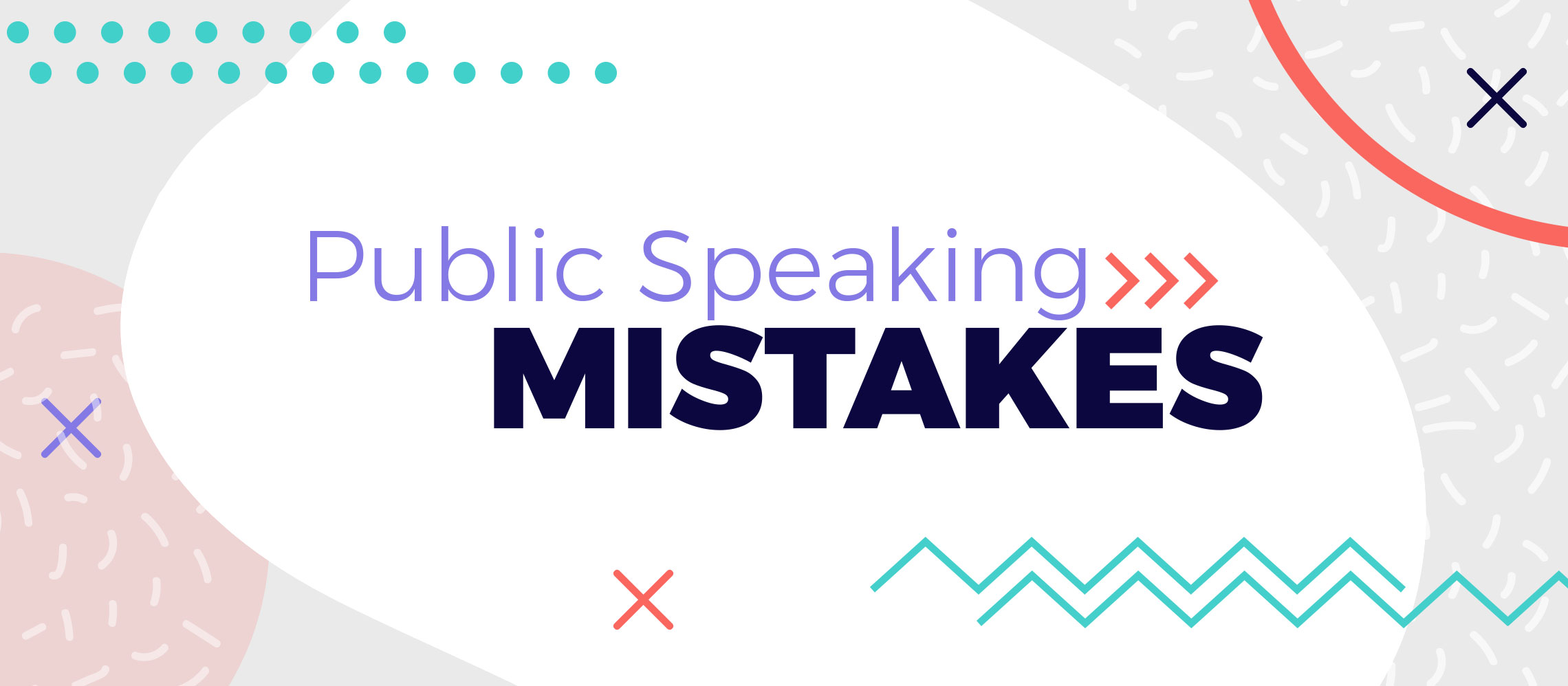We all make mistakes, we’re only human. And this humanity could be your ticket to more impactful presentations and deeper customer connections. Forget trying to eliminate public speaking mistakes, it’s time to embrace imperfection. Stand up and display your flaws to the world.
Let’s cut to the chase: even the idea of making a mistake while speaking in public is terrifying.
You have evolution to thank for this.
Being part of a social group has always been key to survival and, back in the day, you could easily have been ostracised for a simple public speaking mistake. When your palms sweat and your legs wobble uncontrollably, it’s just your nervous system letting you know just how important the next fifteen minutes of your life is. Not your most helpful attribute, nervous system.
And while it certainly is important, it’s no longer life and death. If you ask someone to explain their fear of public speaking, most people will tell you they’re afraid of messing up and making fools of themselves. They’re afraid to fail in front of all those watchful eyes.
When it comes down to it, less people are afraid of death than public speaking because it’s not as embarrassing. I think it’s time we got our priorities straight.

 I know, it might be soul destroying to watch back, but you will instantly pick up on your nervous habits. While showing some vulnerability is endearing, being unbearably nervous is going to make your audience feel uneasy. To eliminate these distractions, before your audience catches on, you first need to know what they are.
If it helps: no, you don’t really sound like that.
Don’t let nervous habits distract your audience from your story.
I know, it might be soul destroying to watch back, but you will instantly pick up on your nervous habits. While showing some vulnerability is endearing, being unbearably nervous is going to make your audience feel uneasy. To eliminate these distractions, before your audience catches on, you first need to know what they are.
If it helps: no, you don’t really sound like that.
Don’t let nervous habits distract your audience from your story.
Stop expecting perfection
“We love to see raw truth and openness in other people, but we’re afraid to let them see it in us.” – Brené BrownI’m going to let you in on a secret. You want your presentation to go wrong, you just don’t know it yet. Perfection makes audiences uncomfortable. If you reel off your entire script, word perfect and without even the slightest wobble in your voice, they’re basically going to assume you’re a robot. Nobody wants to buy anything from a robot. Research shows that vulnerability makes us more likeable to others. Coined “the beautiful mess effect”, the abstract vulnerability of others helps us to judge these flaws as positives. While our more concrete understanding of our own flaws leads us to see them as negatives, and assume the rest of the world does too. Give yourself an advantage by focusing on how you move on from your public speaking mistakes, rather than pressuring yourself to never make one.
Get your audience on side
Your presentation doesn’t start when you step onto that stage. What you do in the minutes before your turn to speak is almost as important as what you say when you get up there. Arrive to the venue early, and spend time introducing yourself to the audience. The importance of getting off on the right foot cannot be overstated. Set the tone for what’s about to follow by being confident, upbeat and, ultimately, human. Be interested in them, find out little nuggets of information you can call back to during your presentation, to make them feel involved. Taking the time to get to know your audience will get them on side, before you start to speak. They’ll be invested from the get go and, if you should slip up (literally, or metaphorically), they’ll be rooting for you, and you’ll feel their support from where you stand.
Practice, not perfect
Ultimately, becoming comfortable speaking in front of an audience comes down to practice. It’s the same as exercising a muscle. The more speeches you give and the more conversations you have, the more confident you’ll feel the next time you’re in that situation. If you focus on learning the topic, rather than your lines, not only will you feel like you can take on any situation that arises, you’ll also be able to do your presentation without any notes. This gives you the freedom to move around, react to the audience, and improvise. Sir Ken Robinson is a creativity expert who holds the accolade of ‘most-viewed TED talk of all time’. Throughout his twenty-minute presentation about rethinking the way we educate our children, Robinson doesn’t look at a script once. He doesn’t even glance at notes. Knowing the topic inside out allows him to be truly present and interact with the audience without losing his train of thought. Do you think Robinson has never made a public speaking mistake? He probably makes at least one during this incredible talk, we just don’t know it because he’s so comfortable with his subject matter. Know your messages inside out, but beware of being over rehearsed. Rehearsing every word, every gesture and mapping out your steps can lead to a robotic performance. And if it doesn’t go exactly to plan, you’ll freak out because it’s not what you rehearsed. A good way to achieve perfect imperfection is to limit your reliance on your script. By all means, start practicing with the full script in front of you, then cut it down to key sentences, and keep reducing the amount of text until you can present the whole speech with just one flash card of key words. You can leave this nearby, in case you need it. But I bet you won’t.Stop doing that
This is the tip you don’t want to hear. The best way to prepare for a presentation is to film yourself speaking, preferably in front of an audience, but that means you may have to suck up one bad presentation for the cause. Just let the public speaking mistakes wash over you, this time. I know, it might be soul destroying to watch back, but you will instantly pick up on your nervous habits. While showing some vulnerability is endearing, being unbearably nervous is going to make your audience feel uneasy. To eliminate these distractions, before your audience catches on, you first need to know what they are.
If it helps: no, you don’t really sound like that.
Don’t let nervous habits distract your audience from your story.
I know, it might be soul destroying to watch back, but you will instantly pick up on your nervous habits. While showing some vulnerability is endearing, being unbearably nervous is going to make your audience feel uneasy. To eliminate these distractions, before your audience catches on, you first need to know what they are.
If it helps: no, you don’t really sound like that.
Don’t let nervous habits distract your audience from your story.
Learn to laugh at yourself
The worst thing you can do, following a mistake, is pretend it didn’t happen. By making a joke of your screw up, you take back control. You don’t have to be Eddie Izzard to make fun of your public speaking mistake. In fact, we’re probably all a little bit too comfortable when it comes to self-deprecation, so watch out you don’t take it too far.“If you’re wondering why these slides are in the wrong order. Congratulations, you’ve passed the test.”
“I’ve forgotten what I was going to say. Fiver to anyone who wants to take over for me, while I locate my brain.”Keep it short, sweet, and light-hearted and then move on.


